Compact crossovers rule auto-show world
By John Gilbert
CHICAGO, ILL. — The available shelf-life of an auto show is brief, but for Midwesterners who can get to the fine city of Chicago before February 20, there is a chance to turn a short trip to enjoy countless fine restaurants, nightclubs and blues joints into the chance to see all the newest stuff available from the top automakers of the world.
This may not be the most scintillating season for new vehicles, because Los Angeles and Detroit have already run their car-show course before the annual Chicago Auto Show hits McCormick Place, and most new cars have been shown already. But the nation’s best exhibition hall has a lot of things consumers will find of great interest. Mainly, the current upsurge in interest in small crossover SUVs is evident everywhere.
You can range from Ford — featuring the return of the gy-normous Expedition for large family and trailer hauling, but also tipping off its mini EcoSport, just a bit downsized from the populsr compact Escape. And the tiny but roomy C-Max which is nothing if not electrifying, remains.
The Mustang has been revised again, but its various recent styling twitches and tweaks have reached the point where a variety of them might prove impossible to discern from the others. No more V6, however, as Mustang goes from stalwart V8 to EcoBoost 4s.
KIA is showing off the all-new Stinger luxury/sports sedan in all its South Korean sleek splendor, but it also has the intriguing new Niro Hybrid compact SUV.
Toyota displays TRD sporty versions of the Tundra and Tacoma pickups and Sequoia large SUV, but finds it difficult to hide the swoopy little C-HR that starts out south of the popular RAV4 in both size and price. Its upscale Lexus display features the LS large sedan, which has taken on a much sportier demeanor, and a couple of SUVs that also play to the small but high-performance concept.
The Mazda display is easy to overlook, because the stylish group of vehicles is familiar. But they deserve scrutiny. The large CX-9 has been out a while, and the Mazda6 and Mazda3 sedans look quite the same, too, as do the new small crossovers, the CX-3 and the CX-5. The CX-5 actually is all new, and if you look closely, the red one is a red that is exclusive only to the CX-5. The true newness of all the Mazdas is something called G-Vectoring — an incredible new technological concept that gives all 2017 Mazdas the ability to tip off the driver to turn and swerve in a predictable manner that means the elimination of steering correction. The cars are beautiful, but beauty is “only” skin deep, so look closer!
Nissan, on the other hand, is leading the way in using graphic design, such as solid paint schemes of white, grey, red or black, all with stark black trim, to promote a new Midnight fleet of virtually everything it makes, from the more powerful half-ton Titan XD pickup, on down to the Rogue and all the sedans, down to the Sentra. Yet the display might be stolen by the subtly downsize Rogue Sport, which is a foot shorter than the regular Rogue. The all-new Armada stands above the other Nissans in size and capability, and a new Pathfinder, which benefits from Nissan’s new engine upgrades.
General Motors is taking a similar route, coming out with a Red Line trim feature on a large group of its vehicles. It’s a familiar idea, to use paint schemes to disguise the fact that you’ve already shown most of your stable, but of course Chevrolet has the all-electric Bolt, which continues to wrack up assorted Car of the Year awards, even though it is not yet out on the streets, and may not be until mid-summer.
Fiat Chrysler Automobiles have all sorts of new toys, featuring the Alfa Romeo Giulia — finally — and the Stelvio, which is a brother in arms with a crossover SUV so flashy that Alfa is pulling back its idea of a Giulia wagon. Also, yet another variation for the Challenger, which just introduced the AWD Challenger GT and now is hitting us with the Mopar Challenger with a giant 6.4-liter Hemi, and a Durango SRT hot rod SUV. Meanwhile, its Jeep arm displays its array and gives proper reason for why the compact Compass still exists by showing off the to-be-introduced new model with refined restyling that stays just north of the Renegade.
The Germans are not to be outdone, of course, with Volkswagen’s new Atlas large SUV as well as the Golf Alltrack and the elongated Tiguan — which will join and then probably replace the blunt but roomy-enough Tiguan, an under-appreciated vehicle that might have been well-sized for this current compact crossover trend.
BMW has its latest SUVs and also the new 5-Series, while Mercedes now has so many SUVs, crossovers and sports cars — many of them with added AMG potency — that it’s hard to find room to walk among them and identify the alphabetized nameplates that only a marketing whiz can remember.
Audi has a fine spread of Q-ship SUVs of all sizes, and sedans and coupes to seduce anyone with a tidy checkbook.
Jaguar also has a dazzling display, with its slinky coupes and new high-tech sedans, as well as the F-Pace, a hot-looking vehicle that indicates the folks at Coventry catch on when it comes to building a promising SUV. Adjoining the Jaguars is the off-road cousin Land Rover display, with new and fancy top-end SUVs and also the newly redesigned Discovery, which now has its name spelled out on the upper lip leading edge of its hood, where it used to say Land Rover.”
Subaru has a new Legacy, and it advances the company farther along the lines of being less quirky and more mainstream. Which is a good thing for Subaru, as it continues to make durable and strong flat-opposed engines that I wish would get better fuel economy.
Mitsubishi is another Japanese company that always seems to be seeking an upturn, and it now is being propped up by Nissan.Its new Outlander SUV is the only new thing, offsetting the elimination of the Lancer and its much-loved Evolution.
Hyundai is about to introduce its new Ioniq, which may indeed be iconic — or iconiq — with a choice of all-electric, hybrid or plug-in hybrid. Meanwhile, Hyundai added to its complement with the new GT version of the popular Elantra, its Civic-Corolla-Mazda3 sized compact, now with about double the high-grade steel, to 53 percent. It has a fresh new style with a hatchback-wagon theme that Hyundai designers have turned into a true sporty vehicle. So sporty, in fact, that I asked Hyundai folks why, since they offer the same 1.6-turbo 4 as the Tucson crossover, they don’t add the AWD platform under the Hyundai GT. All I got were blank stares.
But arming compacts with the very feature that is allowing compact crossovers to crowd small sedans to a lesser corner in the marketplace might be the one distinct way to fight back and change the all-out crossover SUV trend to trend of compact sedans that do the work of crossovers.


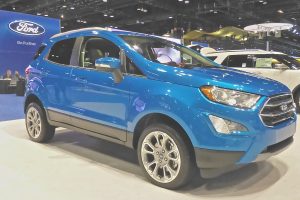
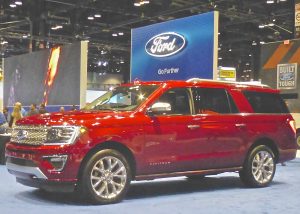

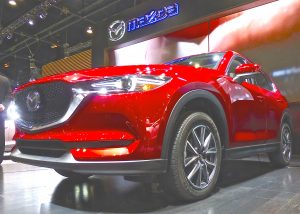
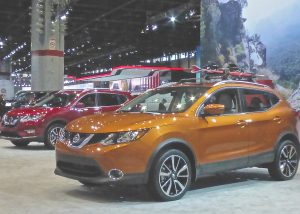
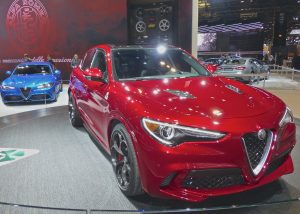
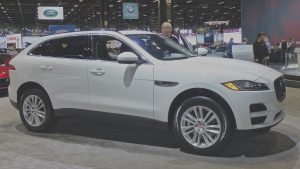
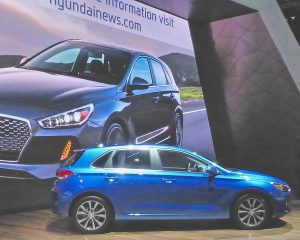
 John Gilbert is a lifetime Minnesotan and career journalist, specializing in cars and sports during and since spending 30 years at the Minneapolis Tribune, now the Star Tribune. More recently, he has continued translating the high-tech world of autos and sharing his passionate insights as a freelance writer/photographer/broadcaster. A member of the prestigious North American Car and Truck of the Year jury since 1993. John can be heard Monday-Friday from 9-11am on 610 KDAL(www.kdal610.com) on the "John Gilbert Show," and writes a column in the Duluth Reader.
John Gilbert is a lifetime Minnesotan and career journalist, specializing in cars and sports during and since spending 30 years at the Minneapolis Tribune, now the Star Tribune. More recently, he has continued translating the high-tech world of autos and sharing his passionate insights as a freelance writer/photographer/broadcaster. A member of the prestigious North American Car and Truck of the Year jury since 1993. John can be heard Monday-Friday from 9-11am on 610 KDAL(www.kdal610.com) on the "John Gilbert Show," and writes a column in the Duluth Reader.